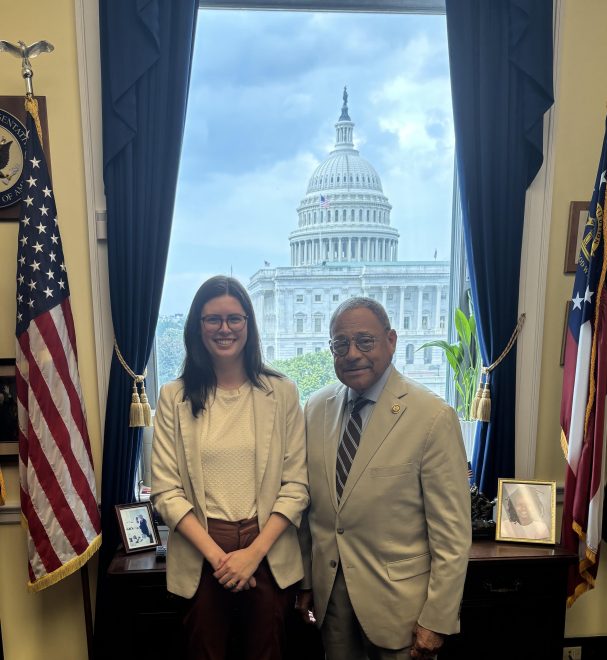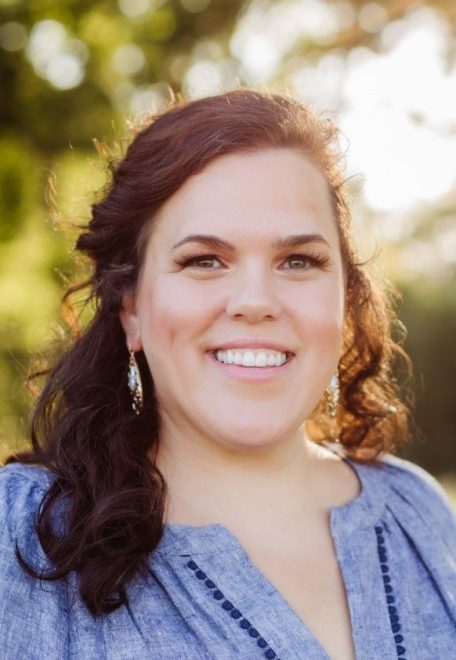Deer Crossing: Deer-related collisions cause damage, harm
Published 8:00 am Wednesday, December 26, 2018

- Brian Tomlinson of Tomlinson Body Shop in Hahaira shows damage done to a vehicle cause by a deer collision.
Editor’s note: This is the first part of a two-part look into deer-related accidents. For part two, see the Friday, Dec. 28 edition of The Tifton Gazette.
TIFTON — On a cold day in Thomas County, a deer ran in front of a Thomas County Sheriff’s Office vehicle, turned around and ran back into the woods.
Trending
The officer driving the vehicle, Capt. Chuck McDonald, was lucky the deer decided to turn around, but as many people living in rural areas can attest, deer encounters on the roadway can be dangerous and terrifying.
Even fatal.
McDonald had already seen three deer carcasses on U.S. 319 North. In the last three months, the sheriff’s office has worked crashes involving 47 deer, one turkey and one hog.
“It depends on the time of the month, the moon and feeding times,” McDonald said, referring to deer activity leading to the creatures crashing with vehicles.
McDonald said deer might know when hunting season is over.
“You’ll see them come out in droves after hunting season,” he said.
Trending
Grady County Sheriff Harry Young said his deputies work an average of one or two deer-related accidents a week.
“It’s really bad, sometimes two in one day,” he said.
There are about 1 million car accidents with deer each year that kill 200 Americans, cause more than 10,000 personal injuries and result in $1 billion in vehicle damage, according to the National Highway Traffic Safety Administration.
A Georgia driver has a one-in-131 chance to be in a deer-related crash each year, behind Mississippi at one-in-91, South Carolina at one-in-98 and Arkansas at one-in-106 among Southern states, according to State Farm.
Through November, Colquitt County Sheriff’s Office investigated about 155 auto collisions involving deer. That’s in line with previous years.
There were 167 reported accidents involving deer in 2017 and 174 in 2016.
During the last several weeks, the agency has investigated as many as six in a 24-hour period, and on most days at least two or three.
Across the SunLight Project coverage area – Valdosta, Moultrie, Milledgeville, Dalton, Thomasville and Tifton – sheriff’s departments, police and Georgia State Patrol investigate animal-related crashes at least once a week. During deer mating season, crashes happen daily.
Eyes in the dark
Lowndes County Sheriff Ashley Paulk said deer-related vehicle accidents are bad in the county.
In November, the sheriff’s department handled more than 30 cases. Paulk said deputies investigated an average of an accident a day that related to a car hitting a deer.
“Early one morning in November, we actually had four within a two-hour span,” Paulk said. “You never know where it’ll happen. They’re everywhere.”
He said accidents happen most prevalently on or around county roads, but it is not uncommon for deer to venture into the city limits.
GSP Cpl. Ryan Harding said there were no less than five deer collisions inside Valdosta city limits for 2018. He said the number is most likely on the low side.
“We deal with deer wrecks daily,” Harding said. “You have to remember that the road is running through the deer’s area. As far as the deer’s concerned, that’s his land.”
Harding said deer can be anywhere and that there isn’t much anyone can do except drive with caution.
Despite the constant stream of accidents, there have been no deer-related fatalities this year as of mid December.
Paulk said there was a fatality in 2017 due to a vehicle hitting a deer. He warns drivers to take extreme caution when driving during this time of year.
“If you’re driving in the dark and you see some eyes ahead of you, slow down,” Paulk said. “They’re not going to get out of your way, don’t take it for granted that he’s not going to jump out in front of you.”
The best way to avoid hitting a deer is to use caution and be on the lookout when driving, especially at dusk and dawn.
Looking for love
Male deer looking for love are some of the most destructive forces on South Georgia highways.
“This is breeding season for them,” said Brent Howze, a biologist with the Georgia Department of Natural Resources. “The rut, or breeding season, is (epitomized) by bucks chasing does. It’s occurring right now in Georgia, a lot in Southwest Georgia.”
For drivers, a key distinction is bucks – plural – because seeing a deer cross safely in front of the car doesn’t mean the danger is over. It should alert them to slow down and be prepared to stop.
In some cases, three or four bucks are pursuing a doe.
“When you see one, you’re likely to see more than one,” Howze said.
Meanwhile, deer numbers have decreased statewide since the 1990s.
“They have stabilized at about a million,” Howze said.
With few natural predators, an area where the deer population is sparse can increase rapidly in a short amount of time, he said.
Deer season
In terms of being a road hazard, deer are most active at times of day when vision conditions are poorest for drivers – dusk and just before sunrise – and they can be seen crossing roadways any time of day or night.
Peak breeding season is between Thanksgiving and Christmas, Howze said.
With deer running out of tree lines onto roadways, collisions are often hard to avoid, but Baldwin County Sheriff’s Office Maj. Scott Deason offers drivers tips to try and avoid large animal collisions.
“My advice would be to not swerve to avoid deer, and to control yourspeed when you’re on the road,” he said. “I’ve seen people try to swerve to avoid the wreck and compound their problems by hitting other cars and even leaving the roadway, so I would say to just control your speed and avoid over-correcting.”
While deer cause automobile wrecks regardless of the month or season, studies show drivers are up to three times more likely to strike a deer in November than during any other month, especially in rural areas such as Middle and South Georgia.
With whitetail mating season in full effect, one Baldwin County official said collisions with deer follow a relatively clear pattern.
“Deer are most active this time of year during the pre-dawn hours and after dusk,” Deason said.
As the head of the department’s field operations division, Deason oversees all judicial and road patrol operations carried out by county deputies.
“We work a lot of wrecks on Highway 212 (and) 441 North from the cemetery up to (Lake Sinclair), and any area outside of downtown Milledgeville,” he said.
During the course of 2018, Baldwin deputies worked 79 wrecks involving deer inside the county’s borders.
Damage, repair, costs
For drivers unfortunate enough to hit a large animal, the damage to a car can be a horrendous, and an expensive, experience.
A headlight for a newer car, for example, can run $1,500 in some cases, said Ricky Griffin, manager at Robert Hutson Paint & Body Shop in Moultrie.
After a front-end collision, a deer can flip in the air and damage the windshield and even the roof of a car, he said, or a deer struck with the left or right portion of the front bumper can spin and do damage down the length of a car.
Not all of the damage is purely cosmetic, either.
“If you hit one in the front, most likely it’s going to get the radiator,” Griffin said. “It will have to be towed. It can total out a car, depending on how new it is.”
Griffin had a run-in with a deer in 2017, doing more than $7,500 in damages to his car. He estimates the average cost to repair a car involved in a deer-related accident at about $4,500.
“I don’t know if we’re seeing more,” Griffin said of deer-related car repairs. “We’re definitely not doing any less.”
The estimated number of collisions involving deer and their larger kin — elk, moose and caribou to the north — was estimated at 1.33 million from July 1, 2017, through June 30 of this year, according to State Farm, a modest decrease from 1.34 million in the previous year’s survey.
The company estimates the average cost to repair damage at more than $4,300.
“From late September to the end of December, we typically fix 40 to 45 vehicles damaged by deer in my two stores combined,” said Jamie White, owner of Ken’s Carstar in Varnell and Dalton Carstar South in Dalton.
White said the damage to larger vehicles is usually direct, such as bumpers, grills and headlights. The damage to smaller vehicles can involve the hood, windshield and even the roof.
He said he usually sees accidents happening on country roads.
“We get quite a few off of Airport Road,” he said. “But we do see them on some of the major roads, some near the outskirts of the city (of Dalton).”
Capt. Clay Pangle with the Whitfield County Sheriff’s Office agrees. Accidents involving deer are most common on rural roads but they can happen anywhere.
“I would recommend that drivers remain vigilant at all times,” he said.
The SunLight Project team of journalists who contributed to this report includes Thomas Lynn, Alan Mauldin, Patti Dozier, Charles Oliver and Will Woolever.





